Independent Collectors
Life Cycle
The Marciano Art Foundation hosted Ai Weiwei for the third MAF Project in their Theatre Gallery.
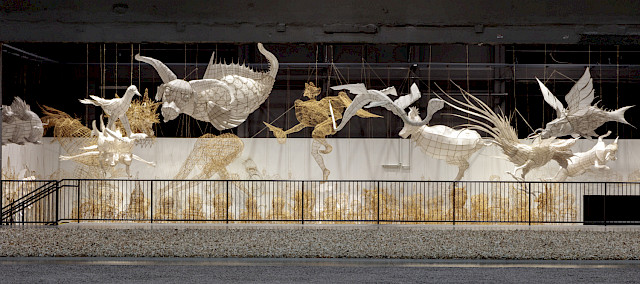
The Marciano Art Foundation invited Chinese artist and activist Ai Weiwei for a solo exhibition for the third MAF Project in the 1,200 square-meter Theater Gallery. With multiple other gallery spaces across three floors, the Marciano brothers publicly share their collection, in combination with the regularly changing project series. This creates the flexibility to present artistic positions from their collection in a new way, supplementary to the works existing in the foundation.
The Marciano Collection focuses on acquiring key works by established, mid-career and emerging artists, living and working around the world. It seeks to communicate and respond to the most historically significant developments in art history and human society, while continuously considering current socio-political conditions and contemporary visual culture. With over 1,500 works by more than 200 artists, dating from the 1990’s to the present, the Collection embodies a variety of formal and conceptual approaches in a variety of mediums – including painting, sculpture, photography, works on paper, installation, performance, film and digital work. Many artists are collected in-depth, in an effort to display the evolution of an artist’s career over time.
In the case of Ai Weiwei’s exhibition (28.09.18 – 03.03.19), this was his first major institutional exhibition in Los Angeles and featured a new and unseen work, Life Cycle (2018) – a sculptural response to the global refugee crisis. The Marciano exhibition also presented iconic installations Sunflower Seeds (2010) and Spouts (2015) within the Foundation’s Theater Gallery. Sunflower Seeds was composed of 49 tons of individual porcelain sunflower seeds made by 1600 artisans from an ancient porcelain production center in Jingdezhen, in China’s Jiangxi province. Spouts piled together thousands of antique teapot spouts dating as far back to the Song dynasty (960–1279).
On view for the first time in the Black Box, Life Cycle (2018) referenced the artist’s 2017 monumental sculpture Law of the Journey, Ai Weiwei’s response to the global refugee crisis, which used inflatable, black PVC rubber to depict the makeshift boats used to reach Europe. In the new iteration, Life Cycle depicted an inflatable boat through the technique used in traditional Chinese kite-making, exchanging the PVC rubber for bamboo.
Suspended around the boat installation were figures crafted from bamboo and silk. In 2015, Ai Weiwei began creating the figures based on mythic creatures from the Shanhaijing, or Classic of Mountains and Seas. The classic Chinese text compiles mythic geography and myth; versions of the Shanhaijing have existed since the 4th century B.C. The works were crafted in Weifang, a Chinese city in Shandong province with a tradition of kite-making dating back to the Ming dynasty (1368–1644).
Windows (2015), which hung along the perimeter of the Black Box, draws from Chinese mythology, the tales and illustrations of the Shanhaijing, the history of 20th-century art, and the life and works of the artist. The vignettes featured a dense mix of biographical, mythological, and art historical references to craft a contemporary story. Similar to chapters in a book, or acts in a play, the various scenes include the mythological creatures of the Shanhaijing alongside bamboo versions of Ai Weiwei’s earlier works, such as Template and Bang, and homages to Marcel Duchamp and Jasper Johns. A central theme that ran through the ten vignettes was freedom of speech and Weiwei’s efforts in defending it. Motifs recurring in Weiwei’s practice—the bicycle, the alpaca, symbols of state surveillance and control—were repeated and multiplied.
The multifaceted installation was a continuation of Ai Weiwei’s ongoing engagement with politics and social justice. It followed the release of his feature-length documentary, Human Flow (2017), which depicts the refugee crisis on film. In the artist’s op-ed for the Guardian in February 2018, he wrote, “I was a child refugee. I know how it feels to live in a camp, robbed of my humanity. Refugees must be seen as an essential part of our shared humanity.”
In this Online Exhibition we present works from Life Cycle at The Marciano Art Foundation.
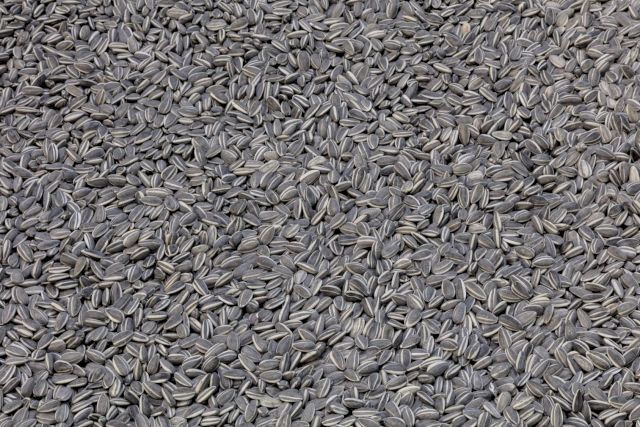
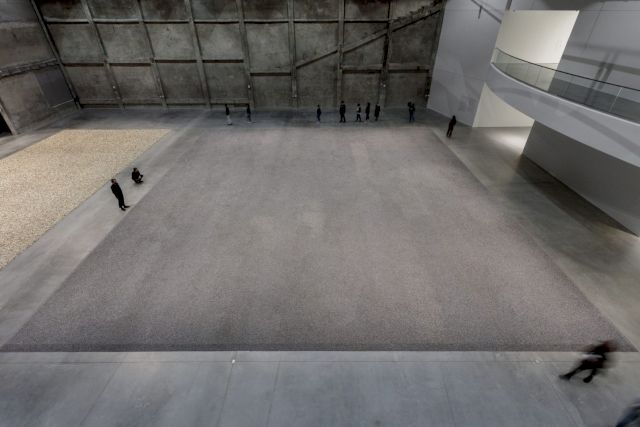
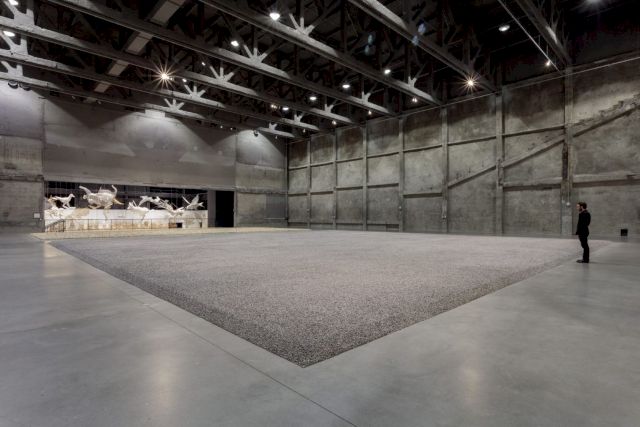
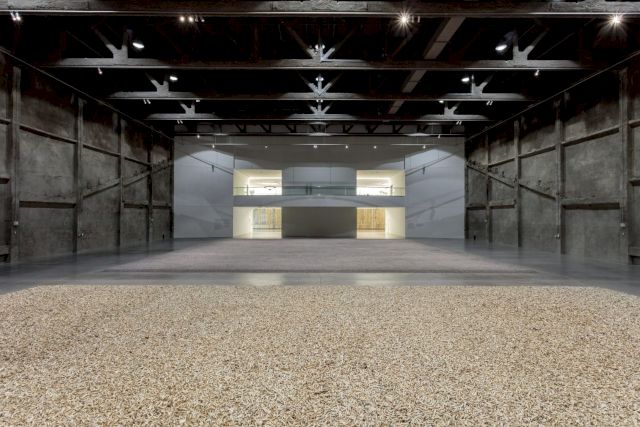
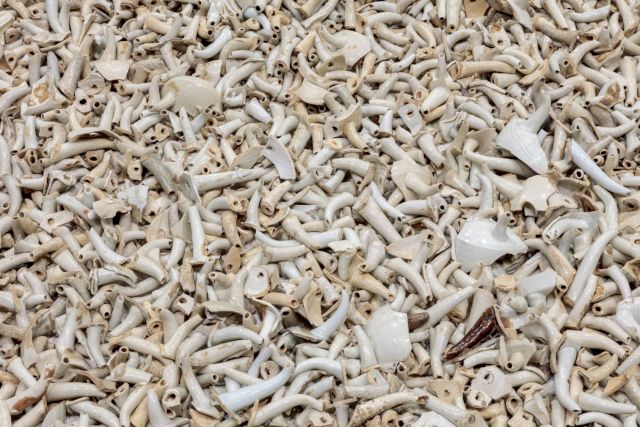

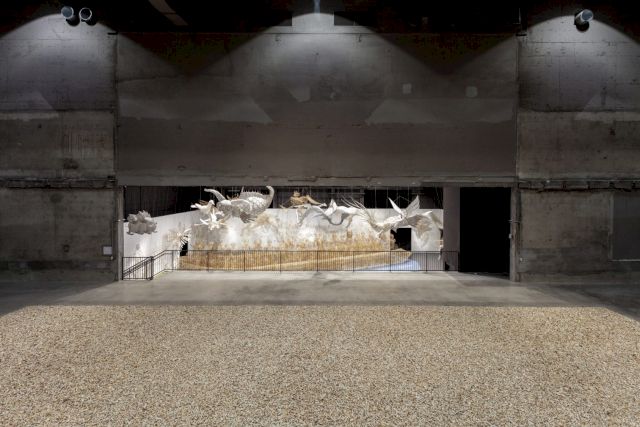
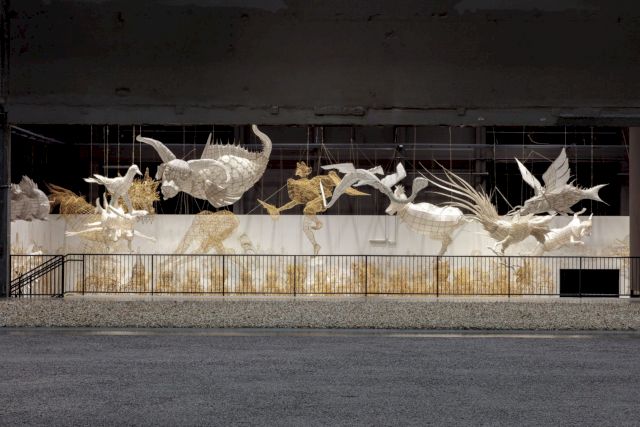
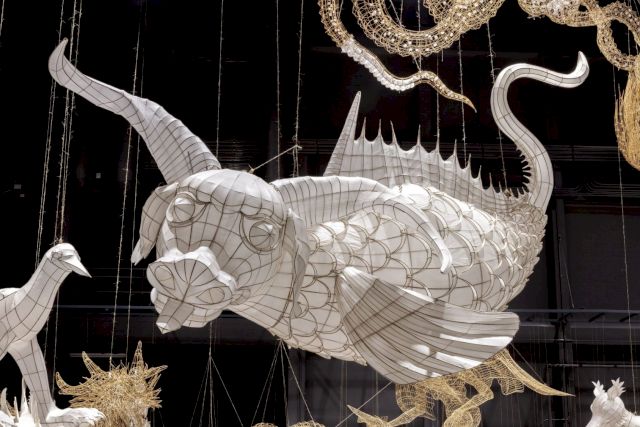

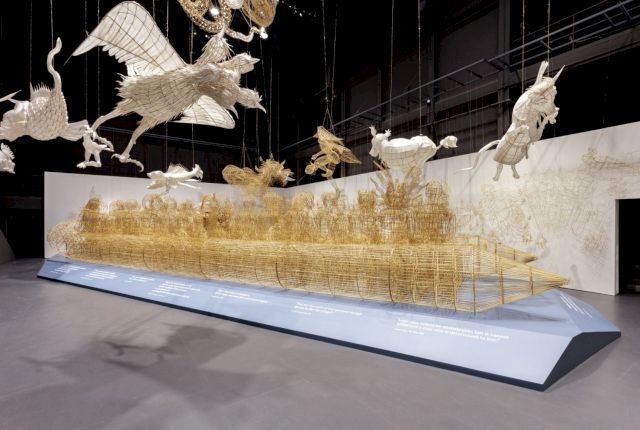

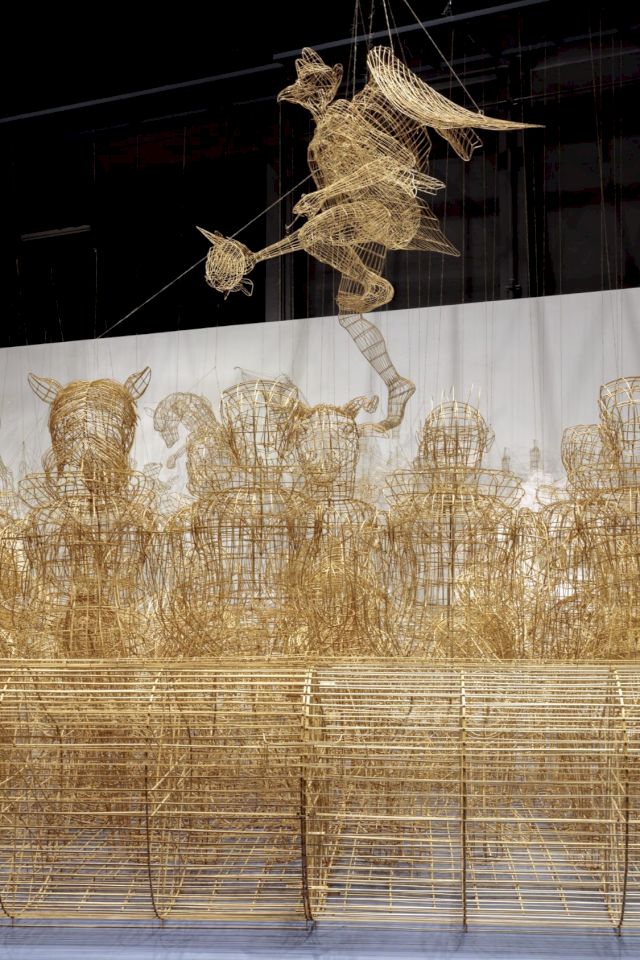
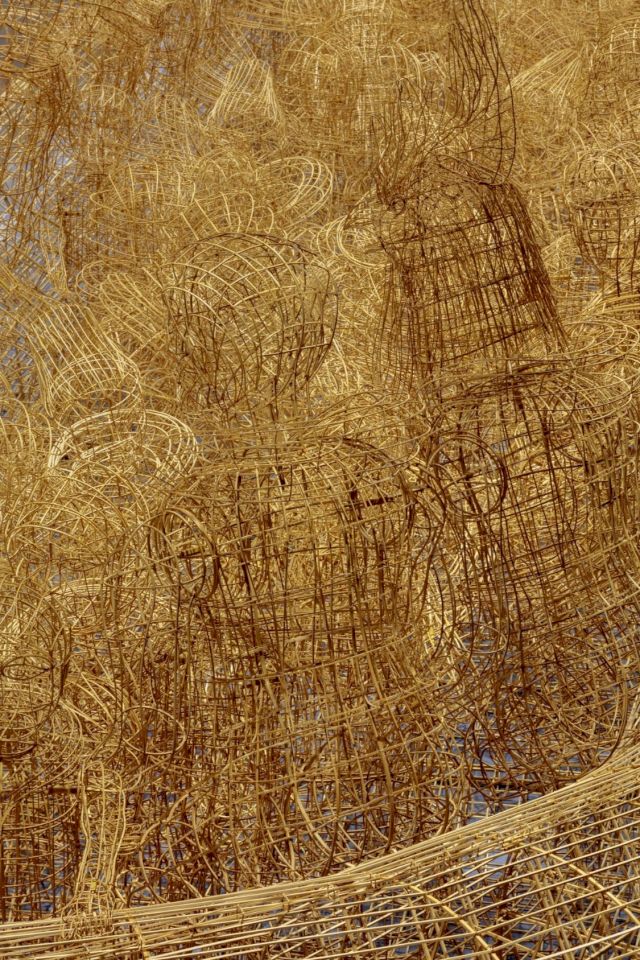
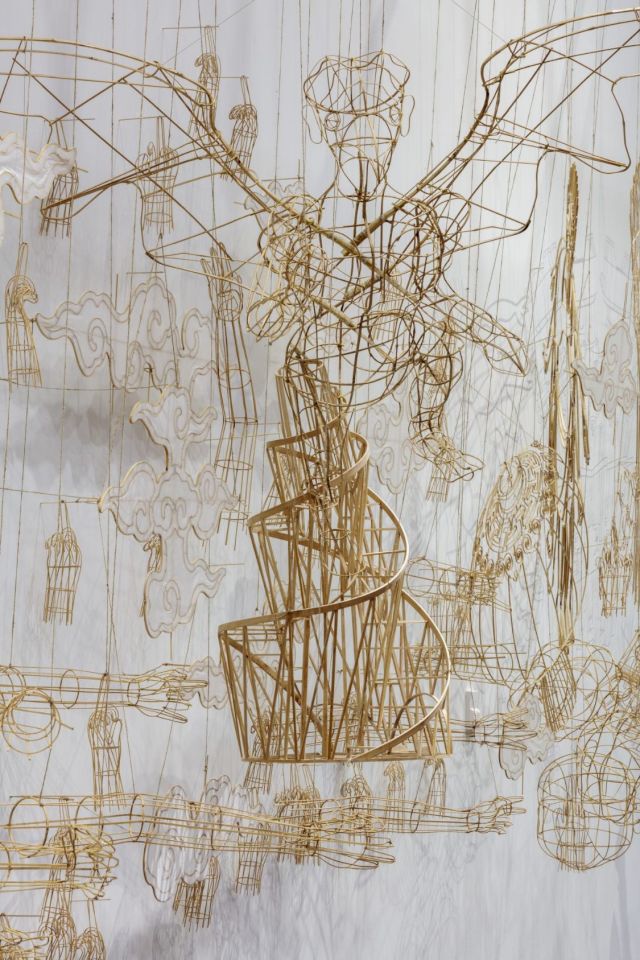
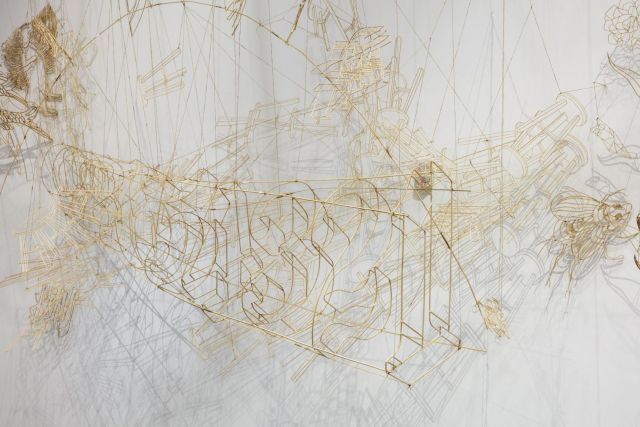
The Marciano Art Foundation is included in the Art Guide.
View the MAF’s previous online exhibition on IC, The Wig Museum.